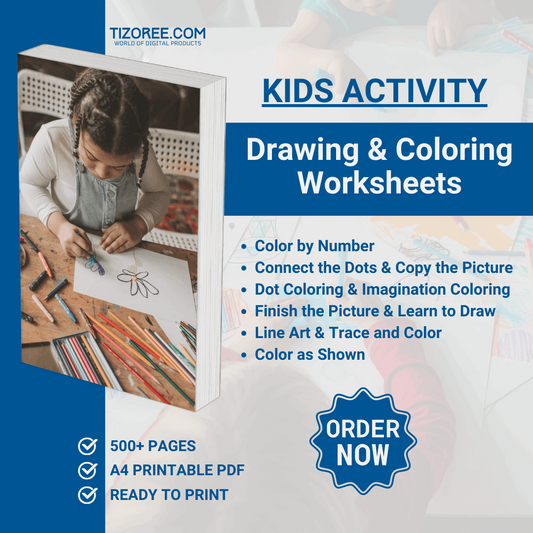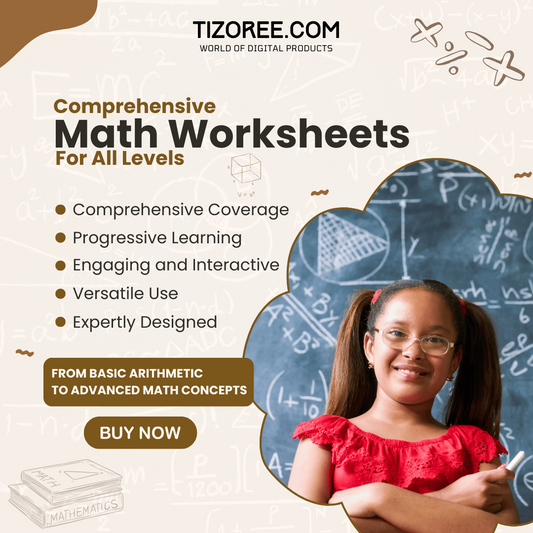Preschool Learning: Colors, Shapes, Body Parts, Time, and Good Behavior
Share
Preschool learning is an essential foundation for young children, enabling them to grasp fundamental concepts in an engaging and enjoyable manner. This article delves into various aspects of preschool education, focusing on colors, shapes, body parts, time, and good behavior.
These topics are crucial for children's cognitive development and social skills. Let's explore each of these areas in depth.
Understanding Colors
Colors play a significant role in a child's early learning experience. Recognizing colors enhances visual perception and aids in categorization. Children often encounter colors in their surroundings, which makes learning about them both relevant and exciting. Here’s a breakdown of common colors and examples to help children associate them with real-world objects:
- Red: Red rose
- Yellow: Sunflower
- Orange: Toy
- Black: Crow
- White: Milk
- Green: Parrot
- Purple: Cap
- Brown: Bag
- Pink: Dress
- Blue: Sky
Interactive games can make learning colors more enjoyable. For instance, children can be shown color cards and asked to name them. This activity encourages recognition and reinforces memory.
Exploring Shapes
Shapes are another fundamental concept in preschool education. Teaching shapes helps children understand their environment and develop spatial awareness. Here are some common shapes along with everyday items that resemble them:
- Circle: Ball
- Square: Photo frame
- Triangle: Mountain
- Rectangle: Fish tank
- Oval: Egg
- Diamond: Kite
- Hexagon: Lantern
- Star: Stars in the sky
Drawing shapes can be a fun activity. Children can learn to draw a circle, square, and triangle while understanding their properties. Engaging in shape recognition games can further enhance their learning experience.
Identifying Body Parts
Knowledge of body parts is crucial for children’s health and safety awareness. Understanding their own bodies helps children communicate their needs effectively. Here’s a list of key body parts that children should learn about:
- Hands: Used for various tasks
- Fingers: Ten in total
- Eyes: For seeing
- Ears: For hearing
- Nose: For smelling
- Mouth: For talking and eating
- Teeth: For chewing
- Legs: For walking
Interactive activities can help reinforce this knowledge. For example, children can be asked to touch specific body parts when named, promoting both recognition and physical coordination.
Understanding Time
Time is a concept that children start to grasp at a young age. Teaching them about the different parts of the day helps them develop a sense of routine. The day can be divided into four parts:
- Morning: When the sun rises
- Afternoon: When the sun shines brightly
- Evening: When the sun sets
- Night: When the moon and stars appear
Children should also learn the days of the week, which consist of:
- Monday
- Tuesday
- Wednesday
- Thursday
- Friday
- Saturday
- Sunday
Using visual aids like clocks and calendars can help children understand the concept of time better. Engaging them in discussions about daily activities can also reinforce their understanding.
Learning About Seasons
Understanding seasons is essential for children as it introduces them to the natural world and its cycles. Each season has unique characteristics and activities associated with it:
- Summer: Hot months; time for ice cream
- Rainy Season: Cool winds and rain; use of raincoats
- Autumn: Leaves turn yellow; a short season
- Winter: Cold months; wearing warm clothes
- Spring: Pleasant weather; blooming flowers
Discussing seasonal changes and related activities can enhance children’s appreciation of nature. Engaging them in seasonal crafts can also make learning tangible and fun.
Encouraging Good Behavior
Good behavior is a vital aspect of social learning. Teaching children about manners and habits helps them develop into respectful and caring individuals. Here are some key points to encourage good behavior:
- Pray for good health
- Wake up early
- Brush teeth twice daily
- Greet people politely
- Say 'please' and 'thank you'
- Share with others
- Respect elders
- Keep your surroundings clean
Role-playing various scenarios can help children practice these behaviors in a fun and engaging way. Positive reinforcement can motivate them to continue practicing good habits.
Conclusion
Preschool learning encompasses essential concepts that form the foundation for children's future education. By engaging children in learning about colors, shapes, body parts, time, and good behavior, we equip them with the skills necessary to navigate their world. Utilizing interactive and fun methods ensures that learning remains enjoyable, fostering a lifelong love for knowledge.
Encouraging curiosity and exploration in young minds sets the stage for a brighter future. Let’s continue to support our children’s learning journey with enthusiasm and creativity!



